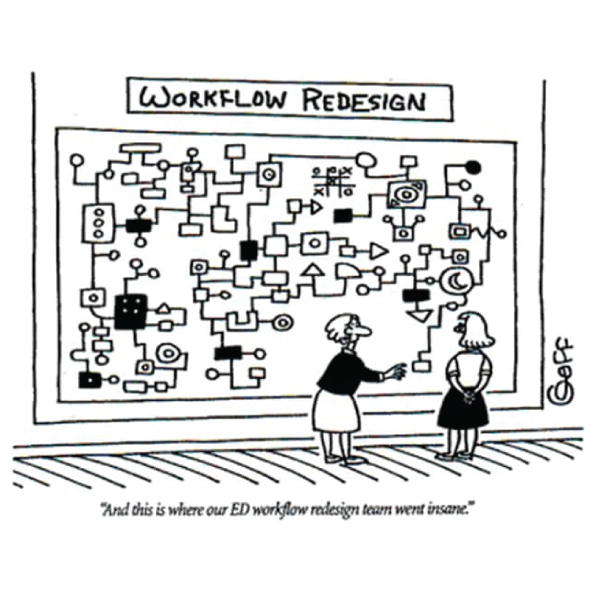Salesforce implementations have the power to revolutionize businesses, streamlining processes, deepening customer relationships, and unlocking smarter decision-making. After more than two decades of guiding Salesforce projects, one of my most rewarding memories remains the moment a VP, seeing their new Salesforce tool for the first time, could only respond with a genuine, astonished, “Wow.” Unfortunately, experiences like this aren’t universal; statistics tell us that around half of all CRM implementations fail. While common reasons like miscommunication, lack of ownership, or ineffective technical teams frequently top the charts, I’ve observed another major culprit: companies often attempt overly ambitious “big bang” launches, trying to achieve everything at once. Though tempting due to potential revenue for consulting firms, these expansive, prolonged implementations often lead to frustration, delays, resource drain, and ultimately, disappointment and project failure.
In my experience, the most successful Salesforce deployments are those executed in small, incremental phases. Another common way people refer to this (and trust me, it comes out of my mouth more often than i wish to admit) is Crawl-Walk-Run. This method of implementation delivers measurable results faster, significantly reduces risks, and greatly enhances overall user adoption. As you may guess, this approach to implementing Salesforce is in our DNA (our name is Simplicity+!).
Here’s why and how you should consider adopting this proven strategy.
The Risks of Large-Scale Salesforce Implementation
Implementing Salesforce with a comprehensive, one-time rollout can seem appealing at first glance, but the hidden pitfalls are significant:
- Overwhelming Complexity
- Large implementations typically involve extensive customizations and integrations that multiply project complexity.
- Complexity increases risk, often leading to missed deadlines, technical debt, and unexpected obstacles.
- High Costs and Resource Drain
- Large-scale deployments require significant upfront investments, stretching budget and personnel thin.
- Costs can quickly escalate as unexpected challenges arise, straining resources even further.
- User Adoption Challenges
- Massive changes delivered simultaneously overwhelm end-users.
- Poor user adoption undermines the entire project’s value, jeopardizing ROI.
Benefits of a Phased Salesforce Implementation Approach
Choosing smaller, incremental phases mitigates these risks and delivers immediate value through:
- Easier Project Planning and Execution
- Breaking projects into smaller phases simplifies planning.
- Teams clearly understand each phase’s objectives, tasks, and outcomes.
- Faster Delivery of Value
- Quick wins from early phases help build confidence and enthusiasm among stakeholders.
- Demonstrating tangible results early boosts morale and maintains momentum.
- Improved User Adoption
- Incremental changes allow users to gradually adapt, promoting higher adoption rates.
- Users experience less disruption and can more easily integrate changes into daily routines.
- Risk Reduction through Iteration
- Smaller phases make it easier to gather feedback and refine implementation continuously.
- Adjustments are more manageable, reducing the likelihood of significant setbacks.
How to Structure Your Phased Salesforce Implementation
A structured approach is essential for success. Follow these steps to effectively plan and execute your phased implementation:
Step-by-Step Guide for Phased Rollout:
Step 1: Identify High-Value, Low-Complexity Features
- Prioritize core functionality that provides immediate impact, such as sales pipeline management, basic reporting, or customer account management.
- Avoid starting with complex customizations or integrations that might delay project timelines.
Step 2: Clearly Define Phase Objectives
- Clearly document goals, expected outcomes, and success criteria for each phase.
- Objectives should be SMART (Specific, Measurable, Achievable, Relevant, Time-bound).
Step 3: Leverage User Feedback
- Actively solicit user feedback at the end of each phase.
- Adjust future phases based on insights gathered from users’ real-world experiences.
Step 4: Continuous Improvement Cycle
- Iteratively refine the Salesforce environment through each phase.
- Gradually add complexity and integrations as user confidence and system stability grow.
Real-Life Example: Consider a retail business that successfully implemented Salesforce by starting simply. Initially, they only rolled out sales tracking and basic reporting capabilities. The immediate value increased user adoption, allowing subsequent phases to smoothly incorporate advanced CRM integrations, automation, and deeper analytics over time.
Common Challenges and How to Overcome Them
While phased implementations have clear advantages, challenges can still emerge. Recognize and proactively manage these common issues:
- Scope Creep
- Stakeholders may push to include more features or requirements during early phases.
- Solution: Maintain strict discipline on phase objectives. Clearly communicate what’s in and out of scope and document change requests formally.
- Misaligned Stakeholder Expectations
- Stakeholders might misunderstand incremental implementations, expecting full functionality immediately.
- Solution: Clearly set expectations with regular, transparent communication. Reinforce phased benefits consistently throughout the project.
- Transition Between Phases
- Users or teams may struggle with the transitions, losing continuity between project phases.
- Solution: Plan smooth transitions carefully, offering dedicated training and support for new features and capabilities as they roll out.
Best Practices for a Successful Phased Salesforce Implementation
To ensure the best results from a phased Salesforce rollout, follow these proven best practices:
- Keep It Simple at First
- Begin with foundational Salesforce features.
- Slowly introduce advanced capabilities to avoid overwhelming users.
- Maintain Regular Check-Ins and Transparent Reporting
- Schedule frequent project reviews to identify issues early.
- Provide transparent progress reports to all stakeholders to maintain trust and accountability.
- Incremental User Training
- Train users consistently throughout the rollout.
- Offer customized training focused specifically on new functionality introduced in each phase.
- Utilize Salesforce Community Resources
- Encourage administrators and project leaders to leverage Salesforce’s community forums, user groups, and online resources.
- Community engagement accelerates learning and supports continuous improvement.
Conclusion
Implementing Salesforce incrementally delivers measurable value, significantly mitigates risks, and drives better user adoption than traditional large-scale deployments. By starting simple and building complexity over time, businesses position themselves for sustained Salesforce success.
Have you experienced Salesforce implementation challenges or success stories of your own? Let us know! And if you’re interested in discussing how we can help implement Salesforce or a Salesforce app using our proven crawl-walk-run methodology, please reach out to me directly via Email me at nik@simplicity-plus.com or Slack. I’d love to connect and explore what’s possible together.





[…] Phased Approach: Break down the project into manageable phases, allowing time for testing, feedback, and adjustments. We wrote on why we wholly believe in this phased approach (also known as crawl, walk, run) in a previous blog post. […]